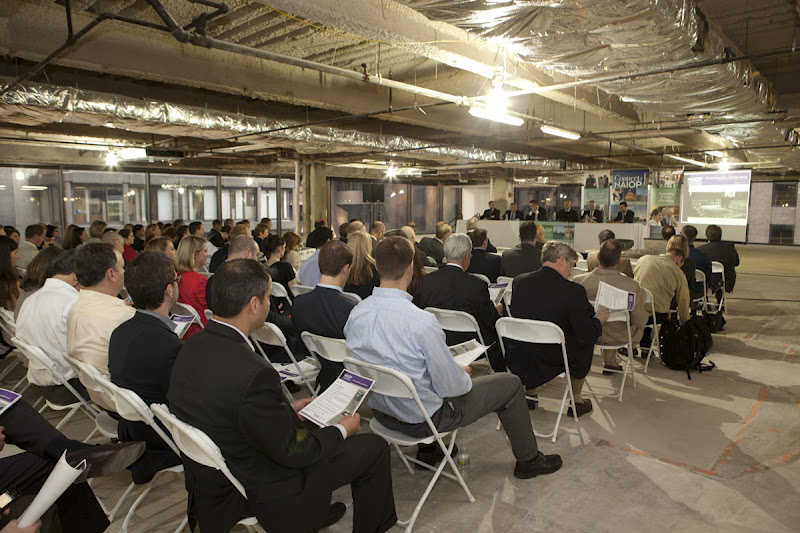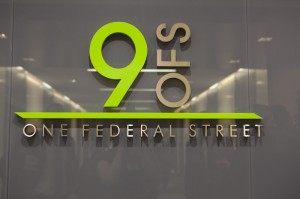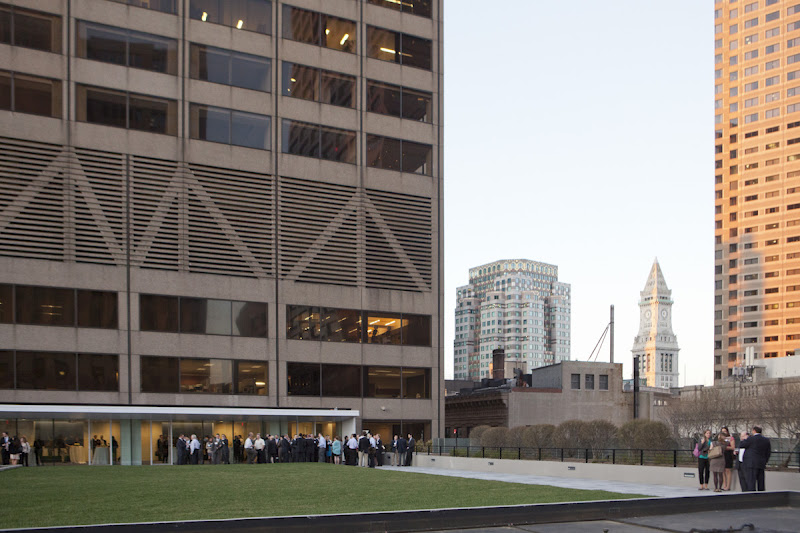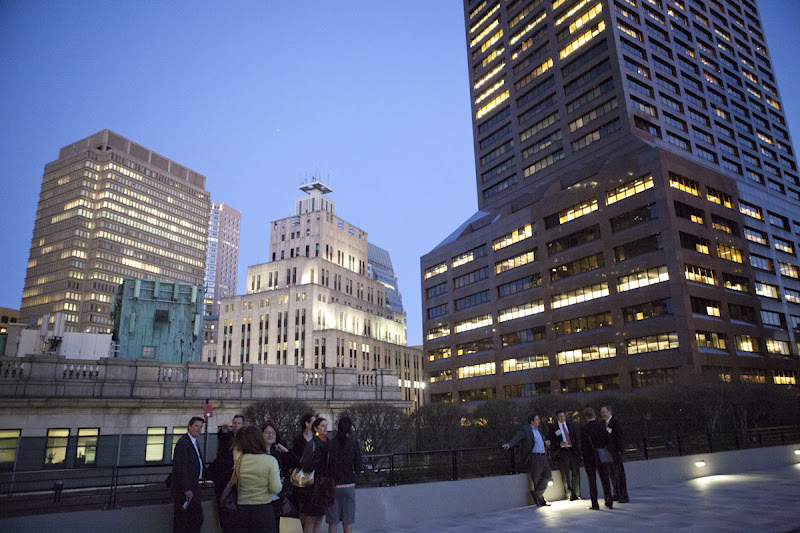 Tishman Speyer hosted a reception at their 101 Federal St property with NAIOP – the premier organization for real estate developers and associated industries (certainly including brokers). The title was “Lifting Boston’s Low-Rise Space” and focused on the difference between upper level office space and how lower floors are harder to lease up. The program started on the 7th floor where they had recently installed windows around the entire space. It had originally been a check processing center with no window, which nowadays downtown is just not a viable.
Tishman Speyer hosted a reception at their 101 Federal St property with NAIOP – the premier organization for real estate developers and associated industries (certainly including brokers). The title was “Lifting Boston’s Low-Rise Space” and focused on the difference between upper level office space and how lower floors are harder to lease up. The program started on the 7th floor where they had recently installed windows around the entire space. It had originally been a check processing center with no window, which nowadays downtown is just not a viable.
 It was a great crowd and an excellent group of speakers. Dave Martel, Exec. Director of Transition Services and Cushman & Wakefield led off with some great observations. The financial district is 12% vacant but below the 20th floor, it is 23% vacant! He noted that tenants don’t have a lot of imagination: if it doesn’t show well at first, you’re dead. Upper floors are really in good shape. In 2010 we saw an historical shift of best, highest rates, going to Back Bay for the first time. What will be next? He is sure big deals are coming to the CBD as this is where the value for money is.
It was a great crowd and an excellent group of speakers. Dave Martel, Exec. Director of Transition Services and Cushman & Wakefield led off with some great observations. The financial district is 12% vacant but below the 20th floor, it is 23% vacant! He noted that tenants don’t have a lot of imagination: if it doesn’t show well at first, you’re dead. Upper floors are really in good shape. In 2010 we saw an historical shift of best, highest rates, going to Back Bay for the first time. What will be next? He is sure big deals are coming to the CBD as this is where the value for money is.
 Brian Chaisson is the Regional Director for Boston at Tishman Speyer and he went over the history of the building and the renovations. Does anyone know a user of 55,000sf floor plates? Esp. in this one, with lifestyle amenities – people do spend a lot of time in their office buildings. Users are looking for operational efficiencies and lifestyle efficiencies – thus the sport club, conference facilities, retail inside the building, and esp. the roof deck. Sam Schaeffer, the senior director of leasing at Tishman, also chimed in and I actually spoke with him for a while later on – great guy!
Brian Chaisson is the Regional Director for Boston at Tishman Speyer and he went over the history of the building and the renovations. Does anyone know a user of 55,000sf floor plates? Esp. in this one, with lifestyle amenities – people do spend a lot of time in their office buildings. Users are looking for operational efficiencies and lifestyle efficiencies – thus the sport club, conference facilities, retail inside the building, and esp. the roof deck. Sam Schaeffer, the senior director of leasing at Tishman, also chimed in and I actually spoke with him for a while later on – great guy!
From Eastdil Secured, Jim McCaffrey noted that owners need the $45/sf rate since transactions costs are from $25-$40/sf. He is confident that the Financial District will continue to be a good place for business. The quantitive easing going on in the global economy means there is loads of capital sloshing around looking for safe assets in low-risk markets like Boston. Investment sales may be ahead of leasing right now, but it will come back and we will see rents of $50-55 throughout the city. Also driving this attractiveness of downtown space is the new generation of workers who want urban 24h cities. No one is going to 495 he declared.
Fred Kramer at ADD Inc, a design firm, chimed in to say how new workers are a generation about intersection: of work/life, of commerce/recreation, of technology/authenticity. They want to be where the action is. They like coworking environments. Dave Martel picked it up – let’s brand this area for young urban workers. Small firms can’t hire, can’t retain young workers in the burbs. Innovative businesses need to be in the city for the talent. And that Seaport District is still a seaport – there is no where to eat over there. The Financial District is the real Innovation District in Boston.
 We went up to the roof deck for some serious appetizers and a couple of drinks. I joined Dave for a conversation and we talked about flexible office space, how can the city work with the innovation branding. One of his colleagues, unfortunately I can’t remember his name, was asking where all the young techie workers are going to come from (where are they going to live: the new condos going up are $2000 for a 1BR). Dave thinks the market will take care of that.
We went up to the roof deck for some serious appetizers and a couple of drinks. I joined Dave for a conversation and we talked about flexible office space, how can the city work with the innovation branding. One of his colleagues, unfortunately I can’t remember his name, was asking where all the young techie workers are going to come from (where are they going to live: the new condos going up are $2000 for a 1BR). Dave thinks the market will take care of that.
 I met a bunch of good people and will hope to stay in touch with these good NAIOP folks. Some of them will be able to help Lee Partners with some leasing deals for innovative agile small businesses. Thank you to Elisif the photographer at NAIOP who took these great shots – did you see me in the first pic – rightmost seat in the fourth row? I hope I can visit that roofdeck again!
I met a bunch of good people and will hope to stay in touch with these good NAIOP folks. Some of them will be able to help Lee Partners with some leasing deals for innovative agile small businesses. Thank you to Elisif the photographer at NAIOP who took these great shots – did you see me in the first pic – rightmost seat in the fourth row? I hope I can visit that roofdeck again!
